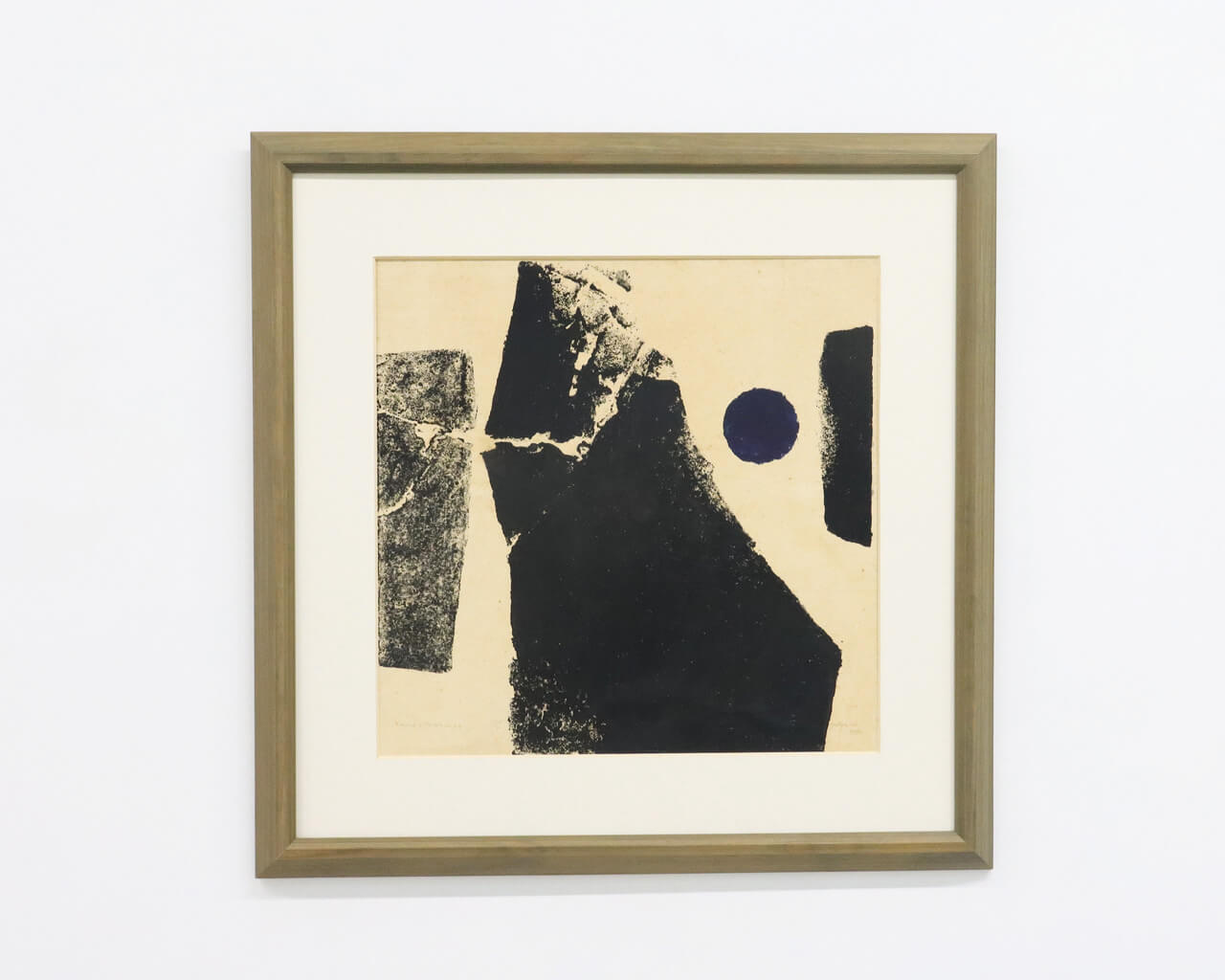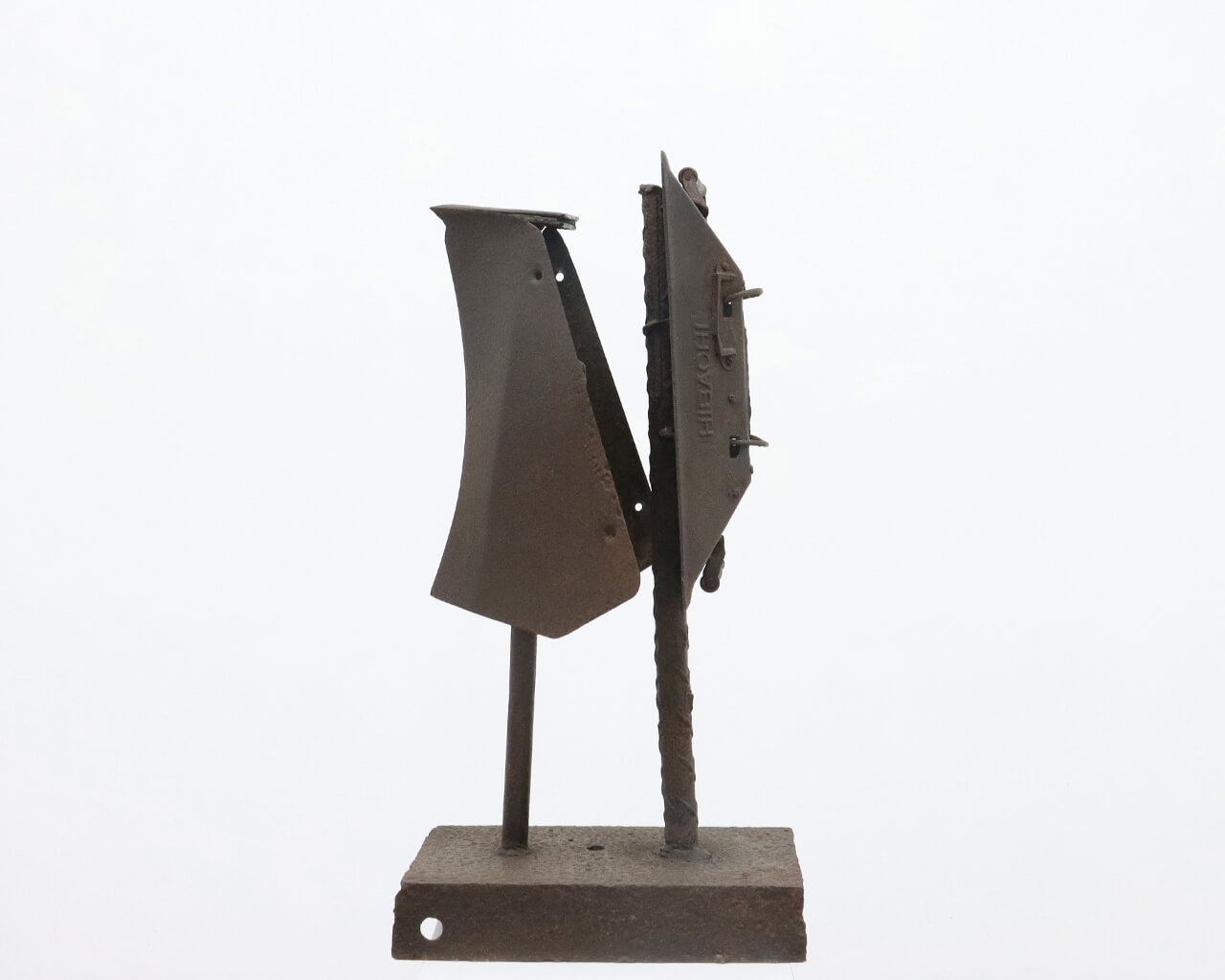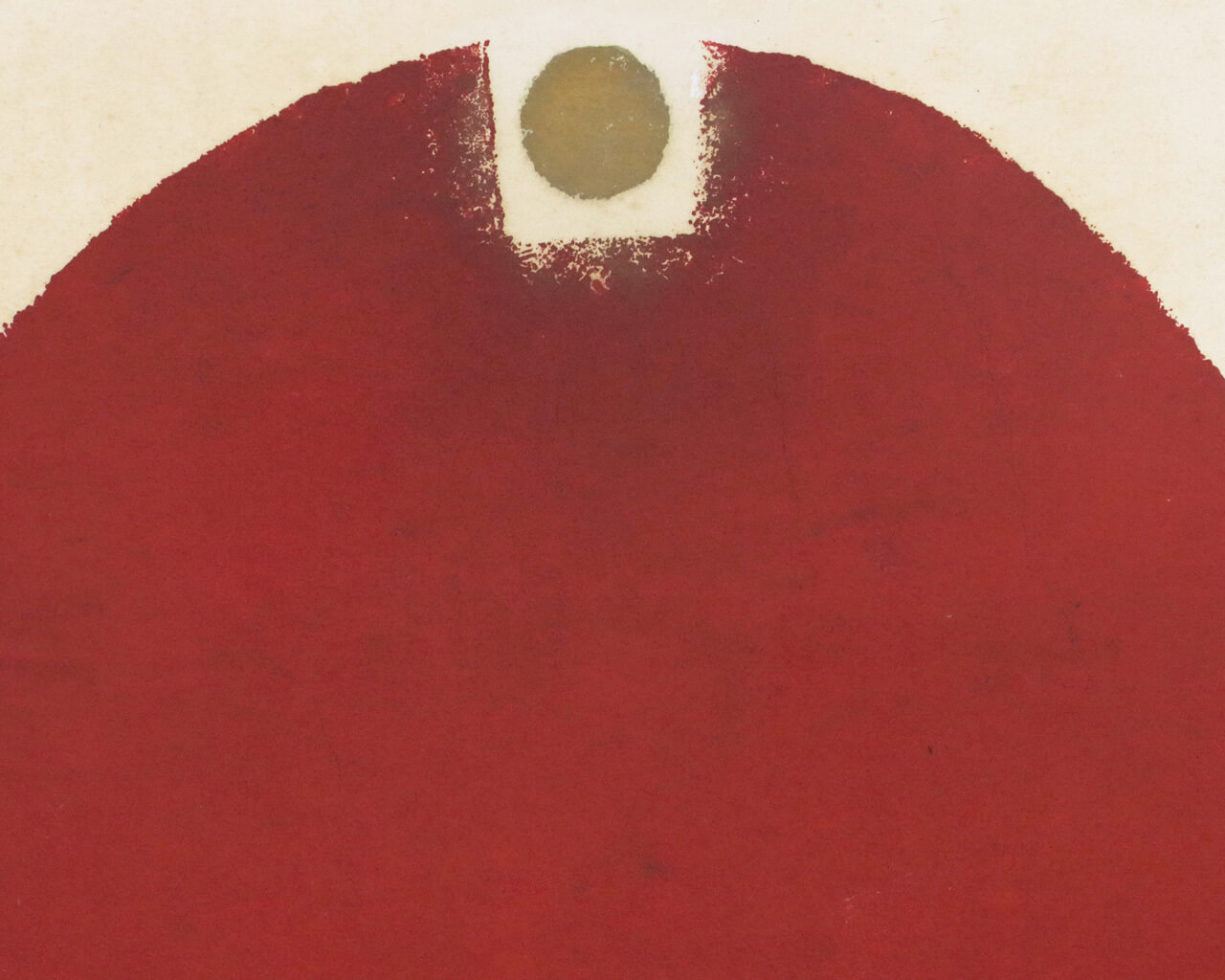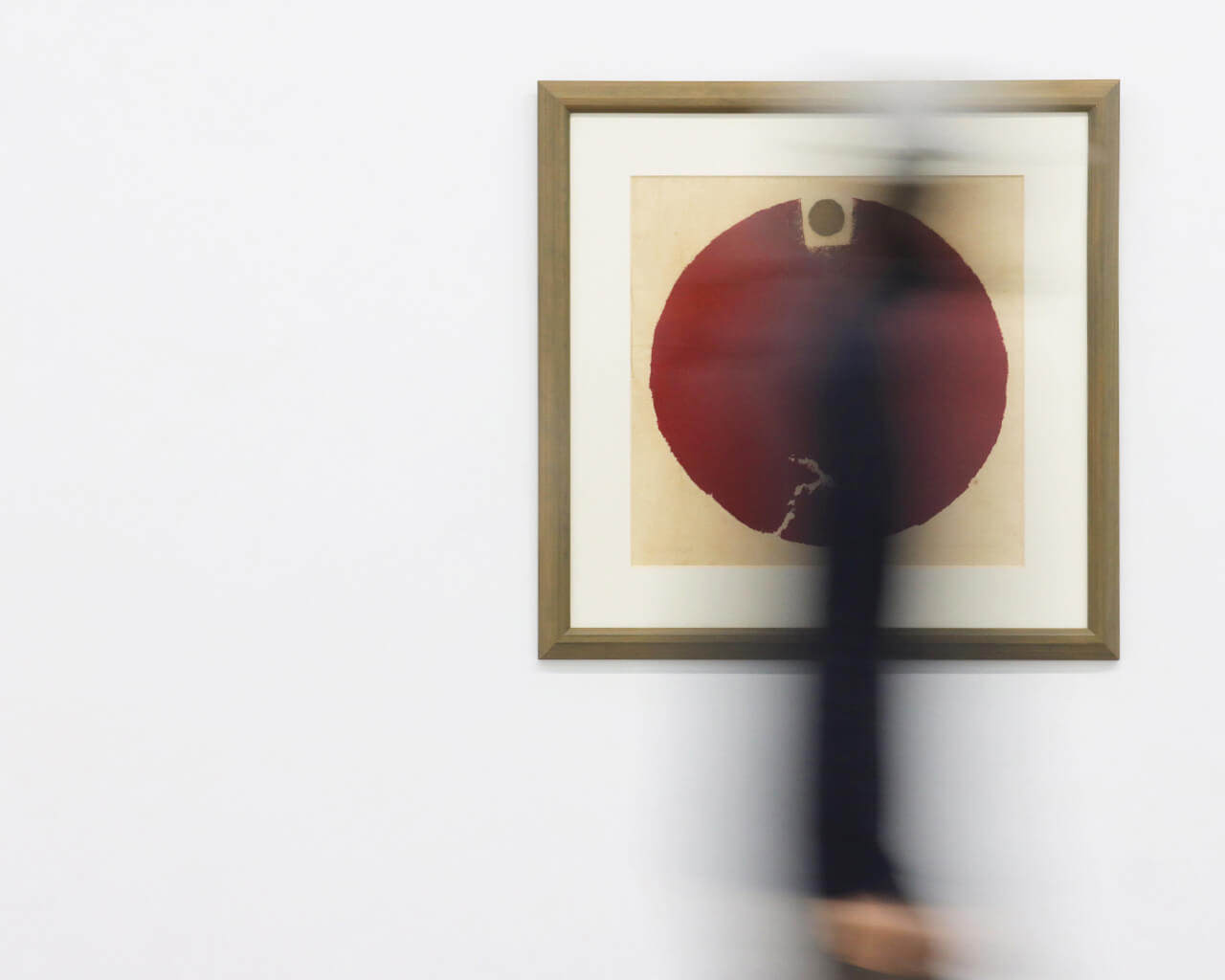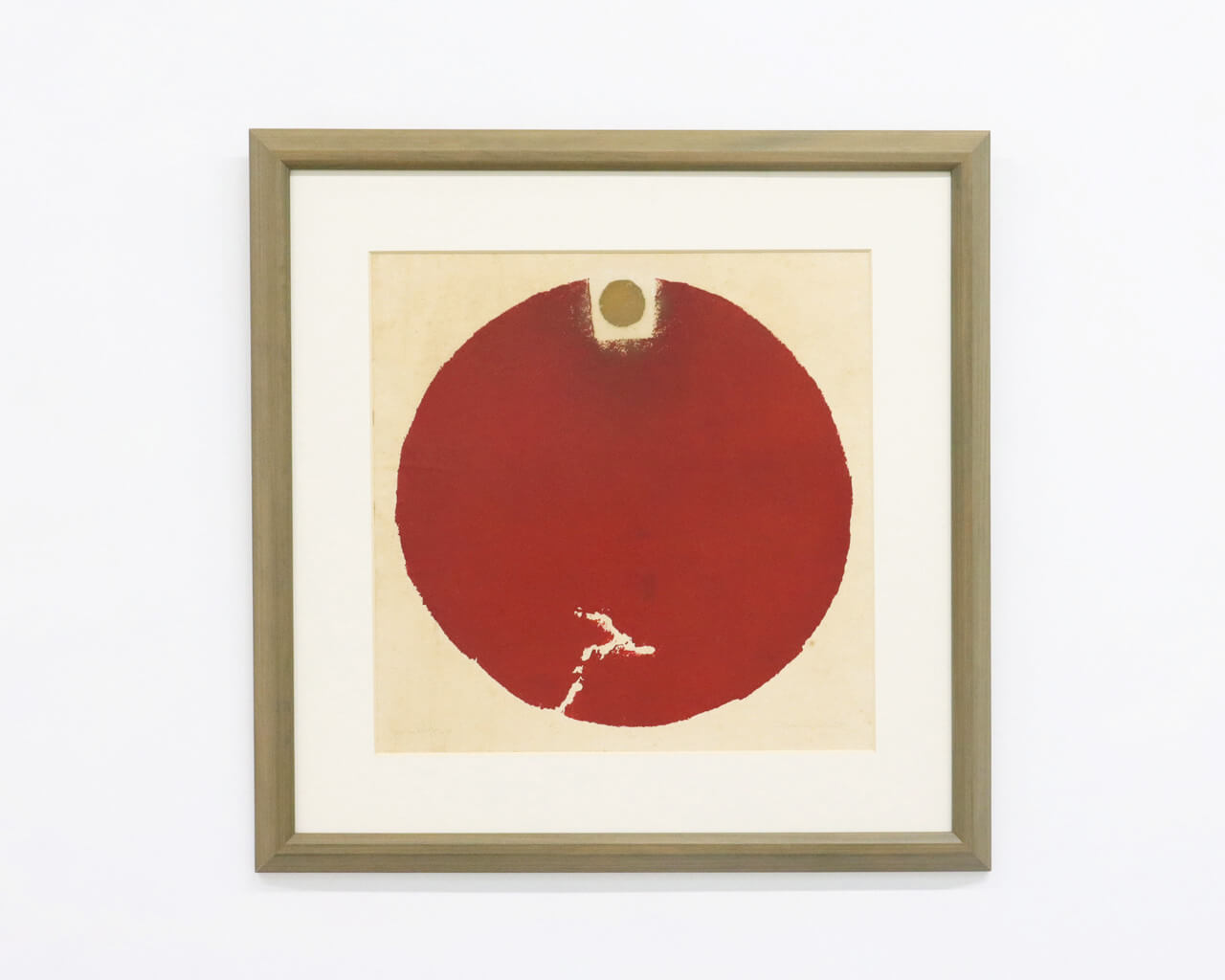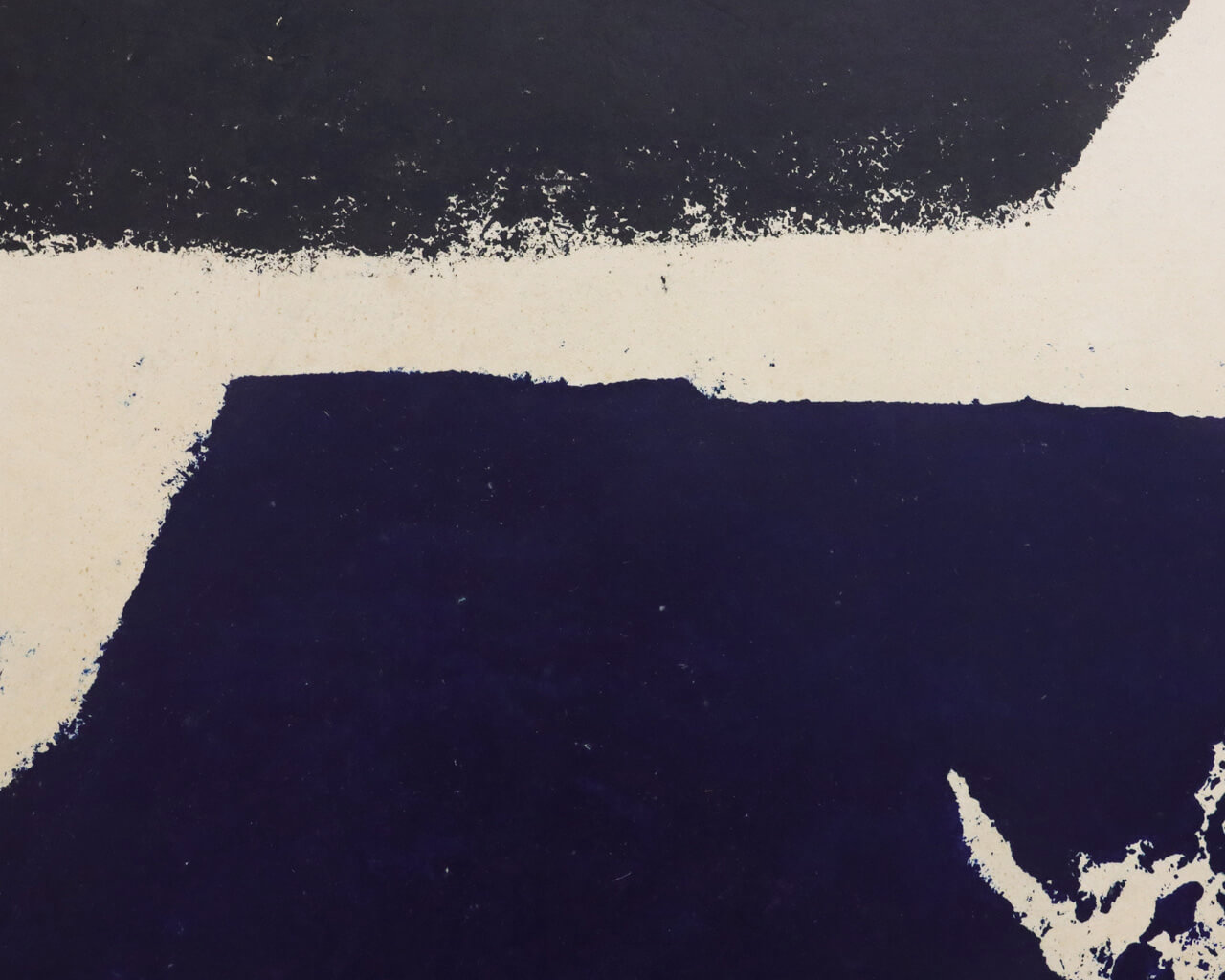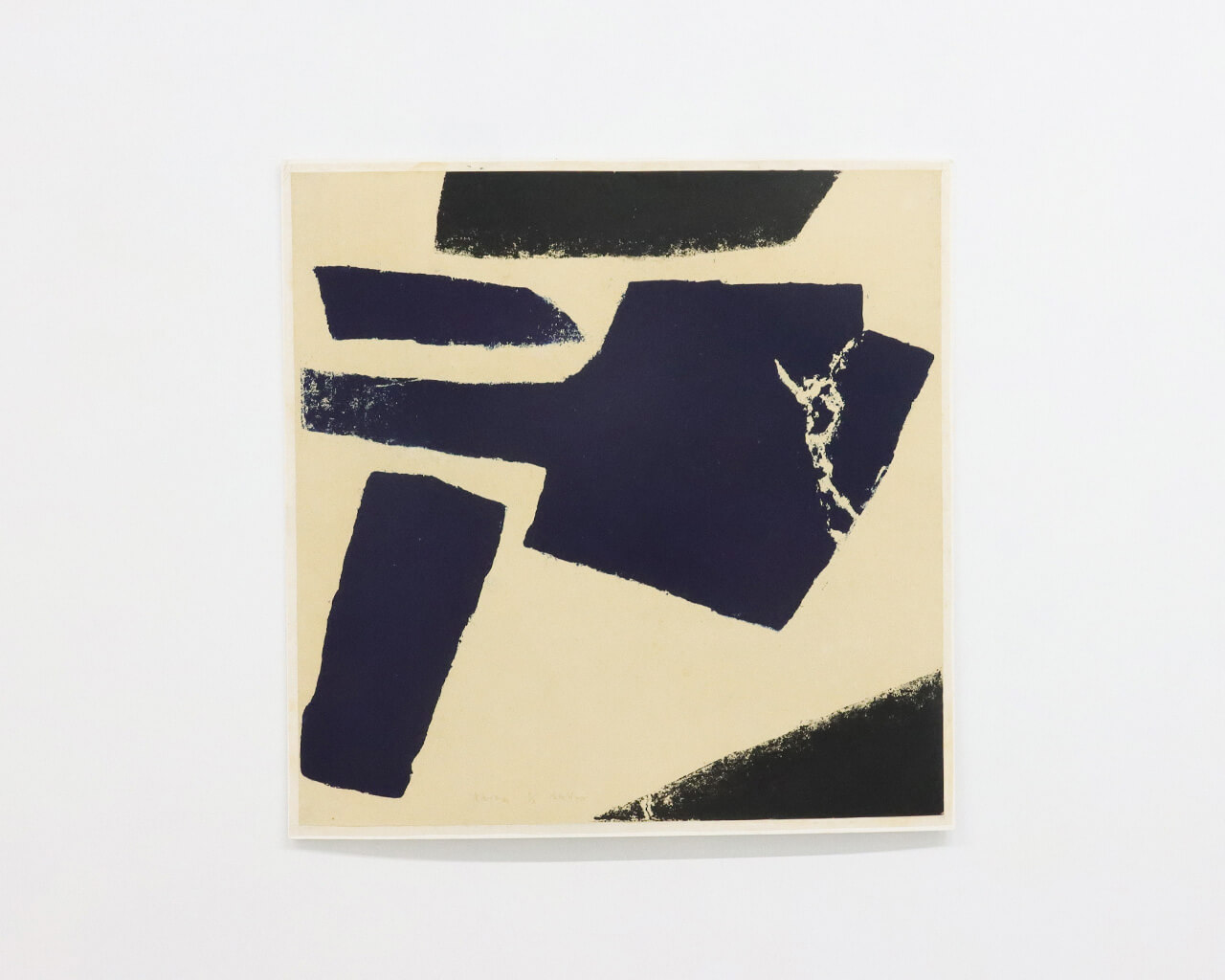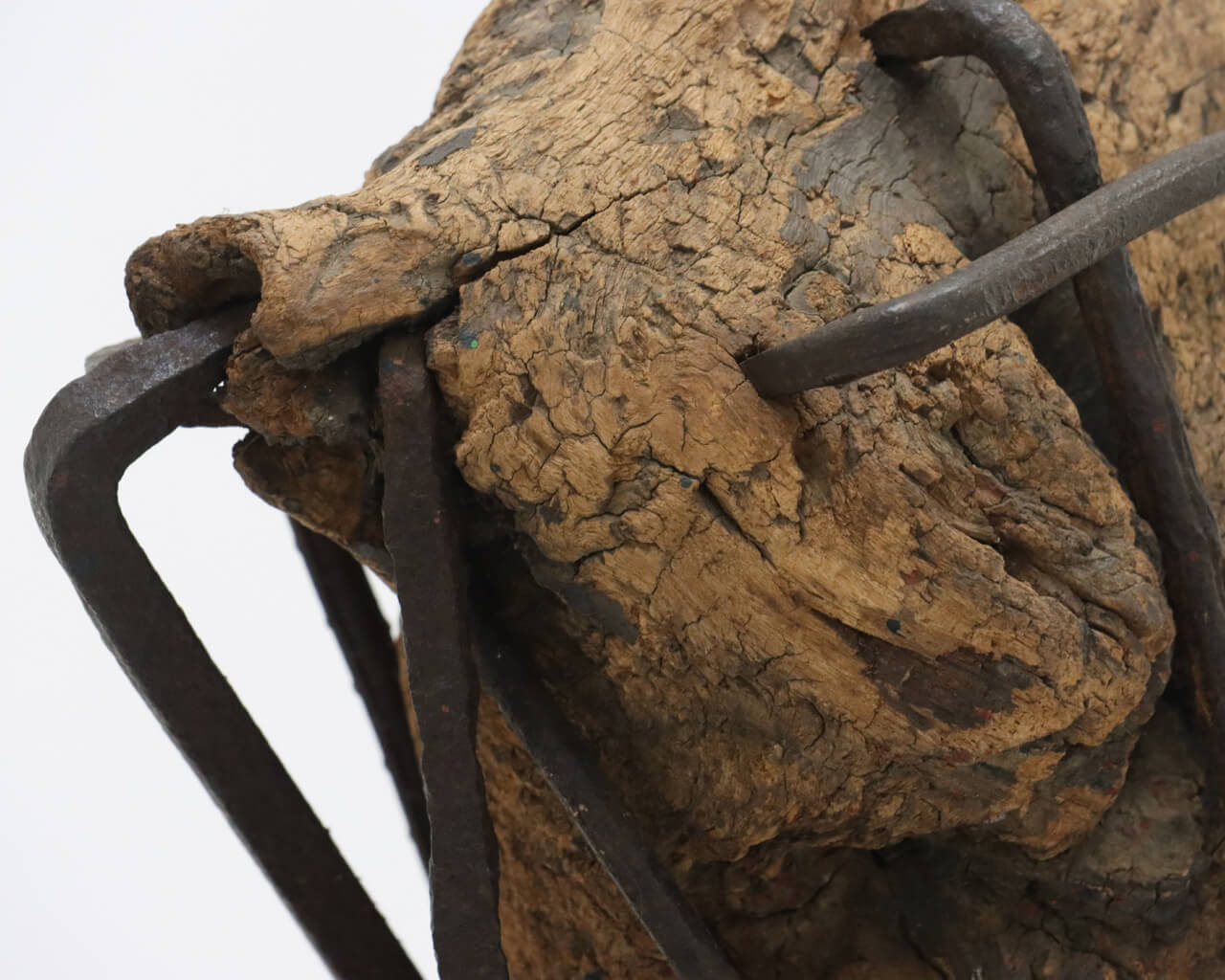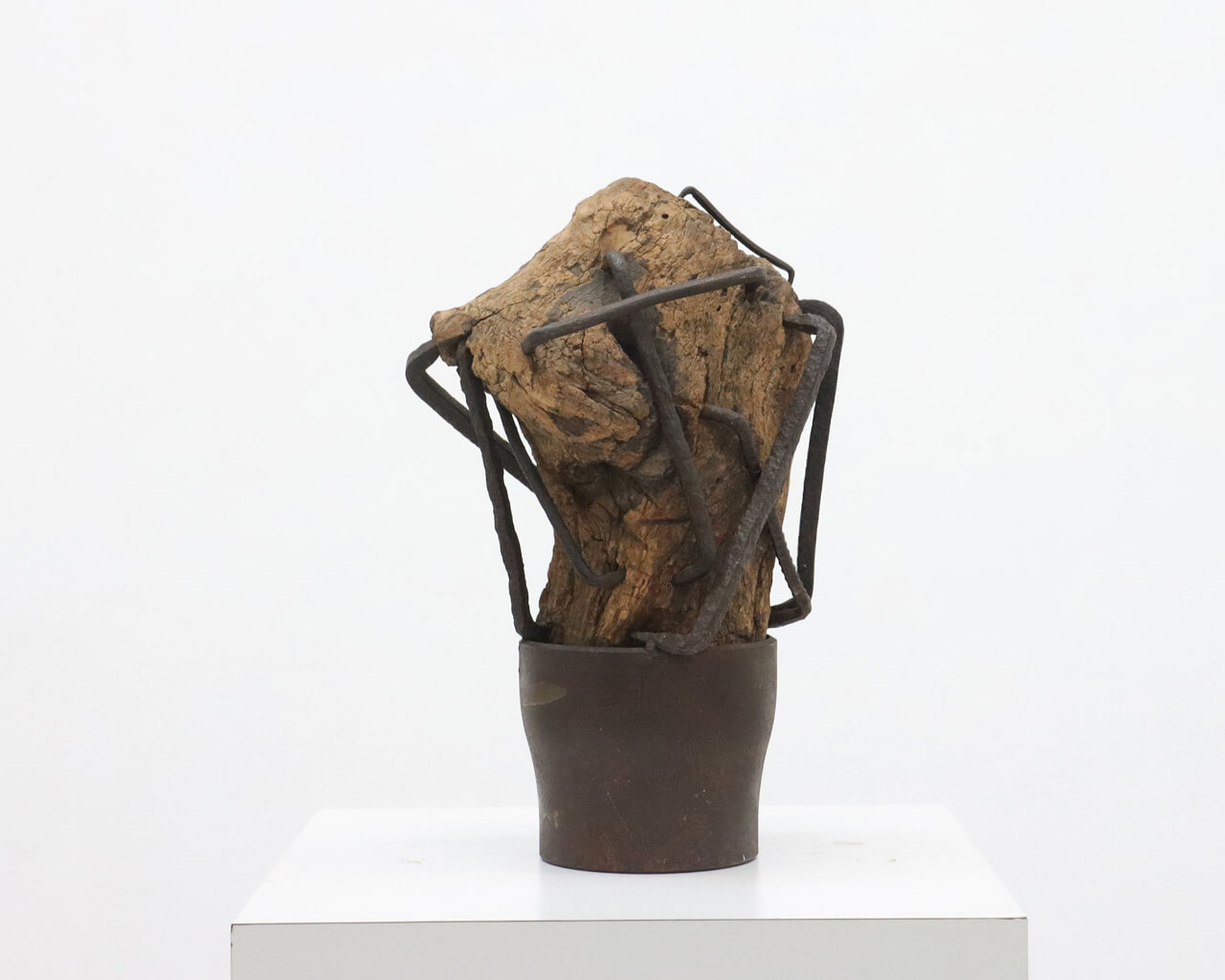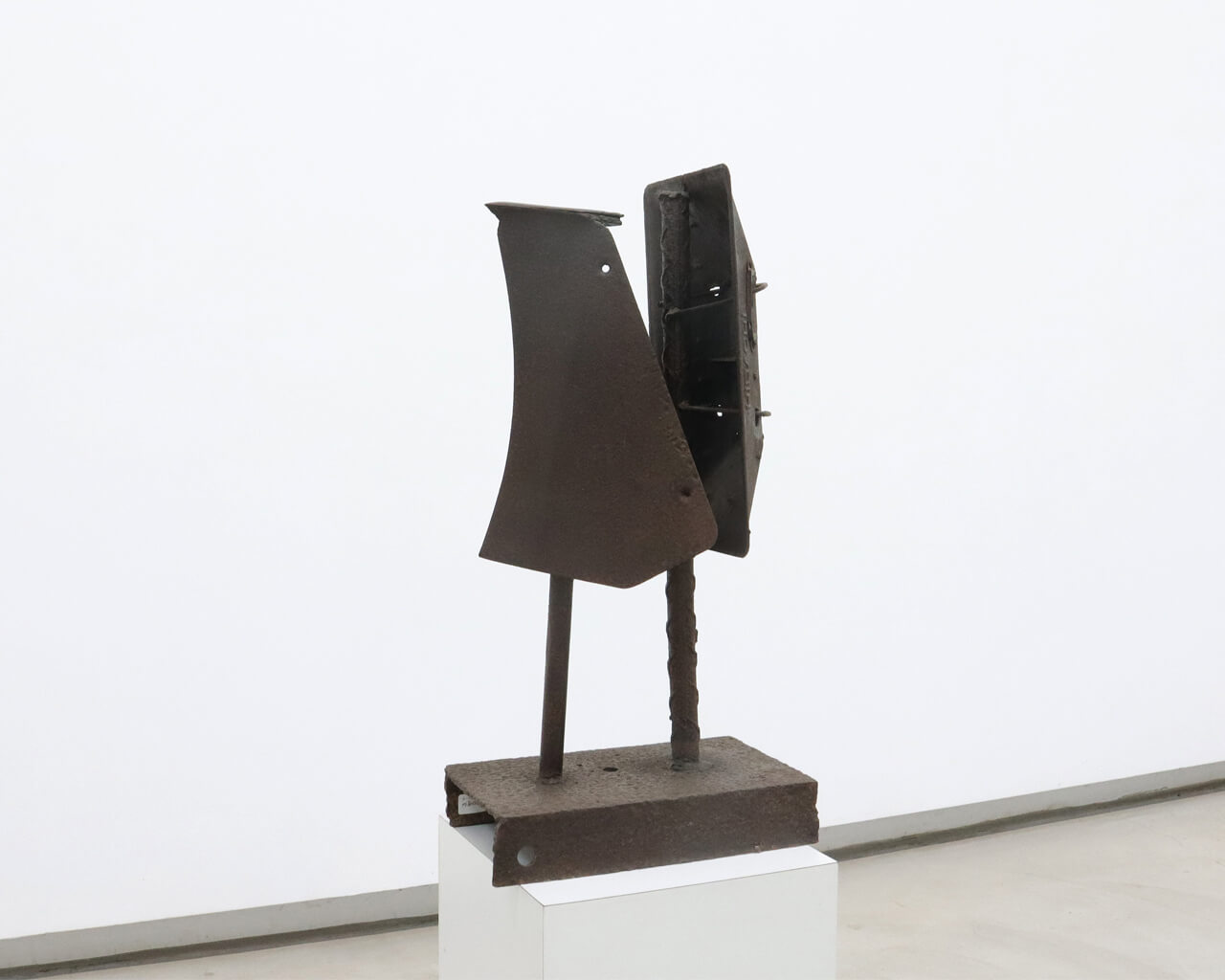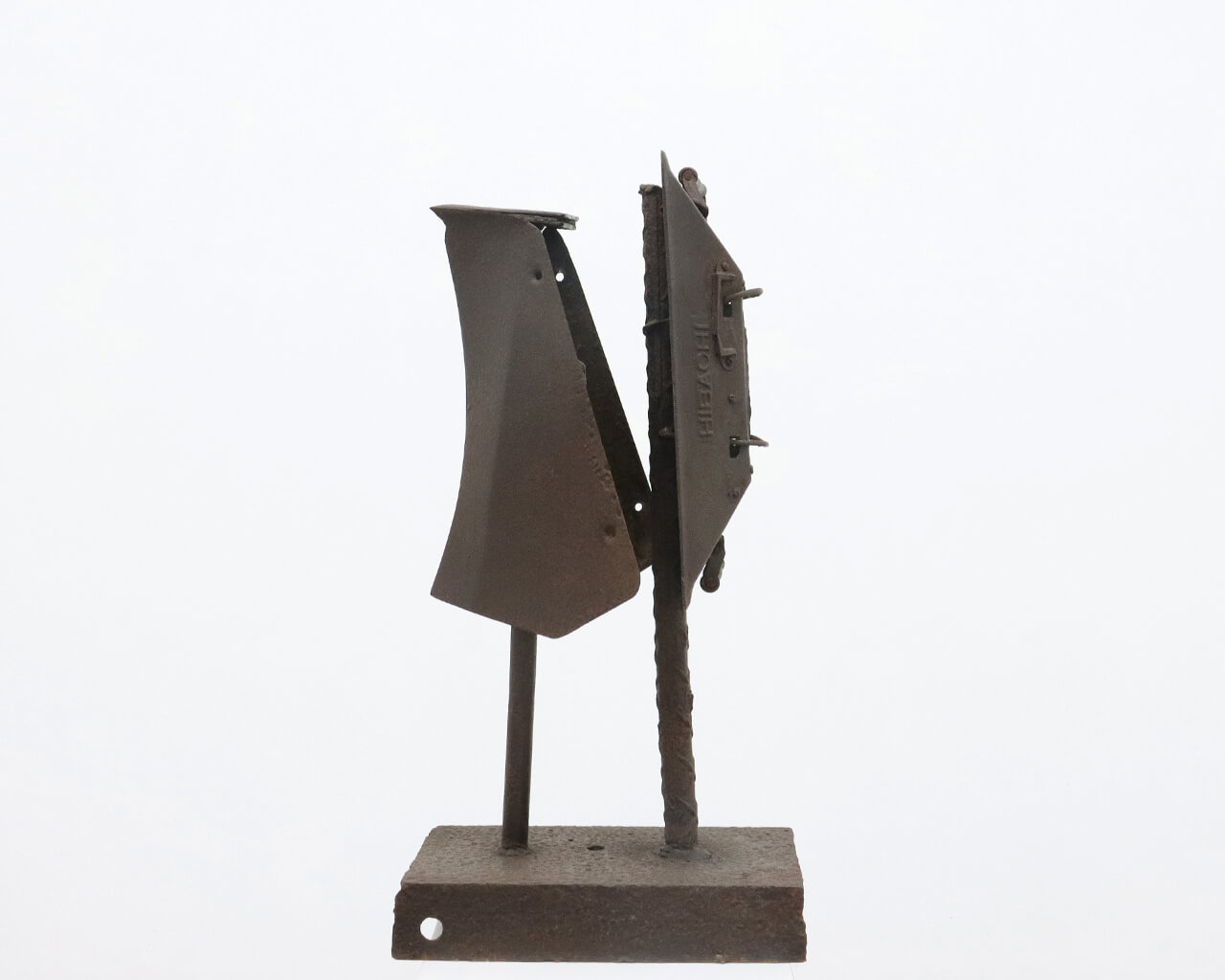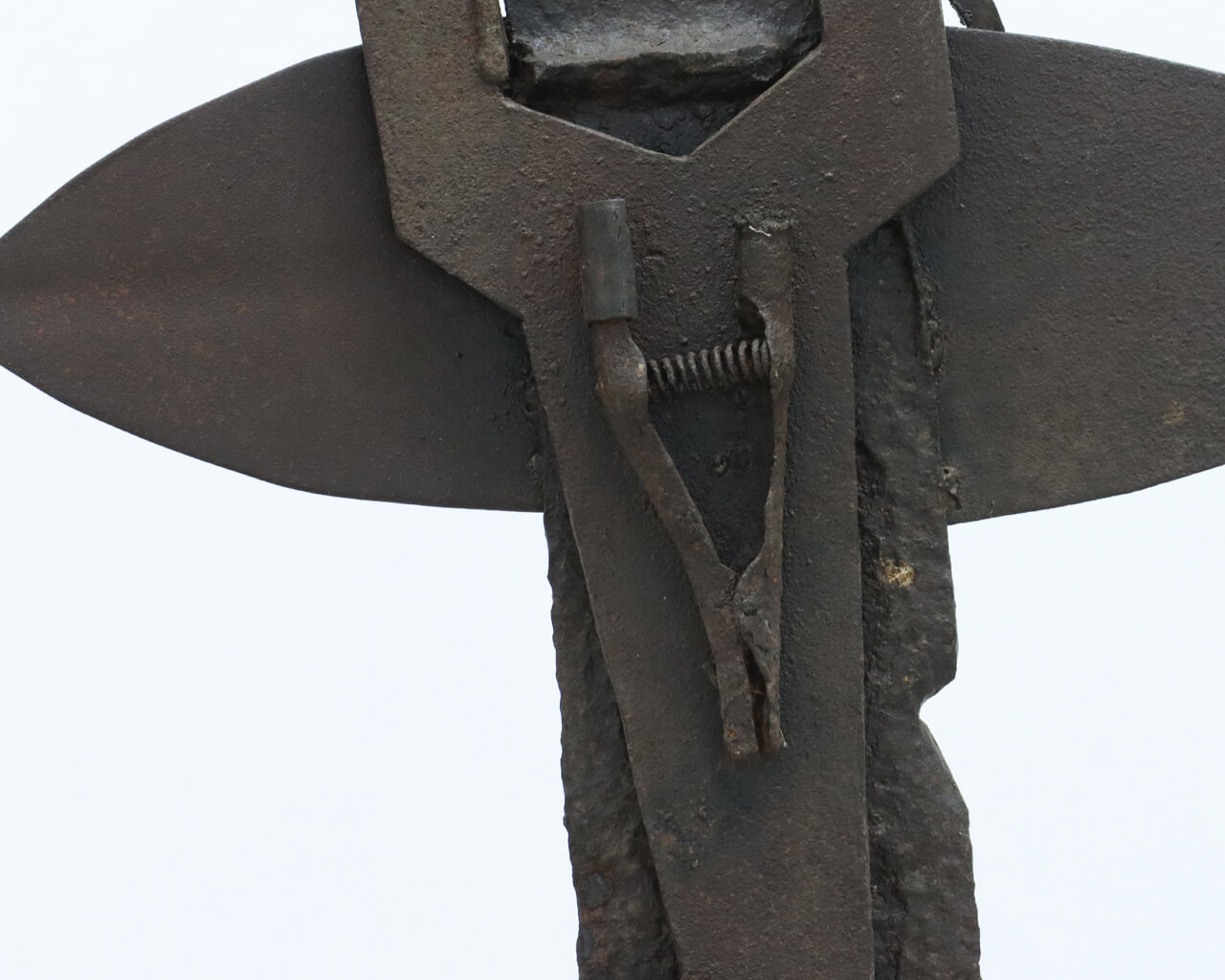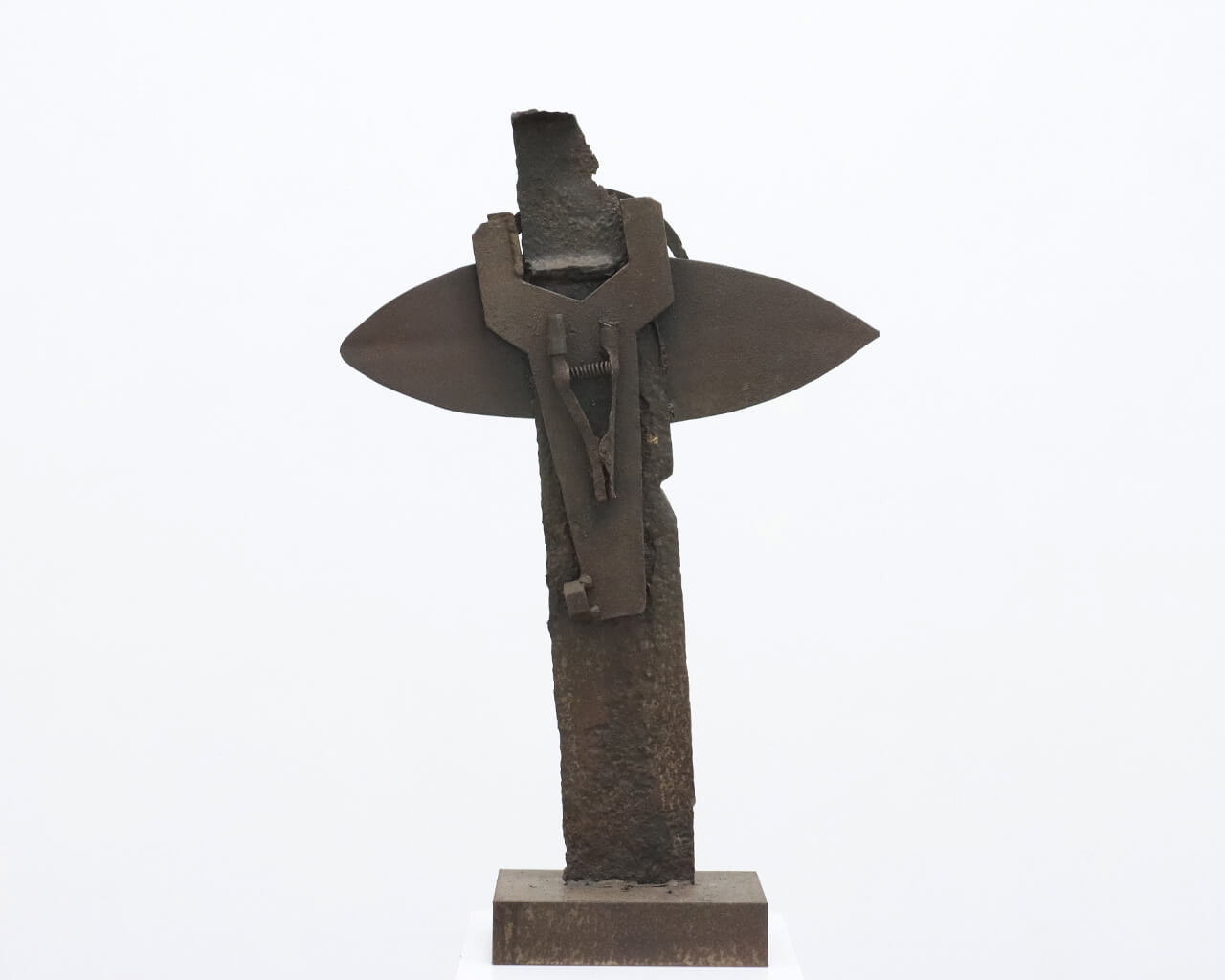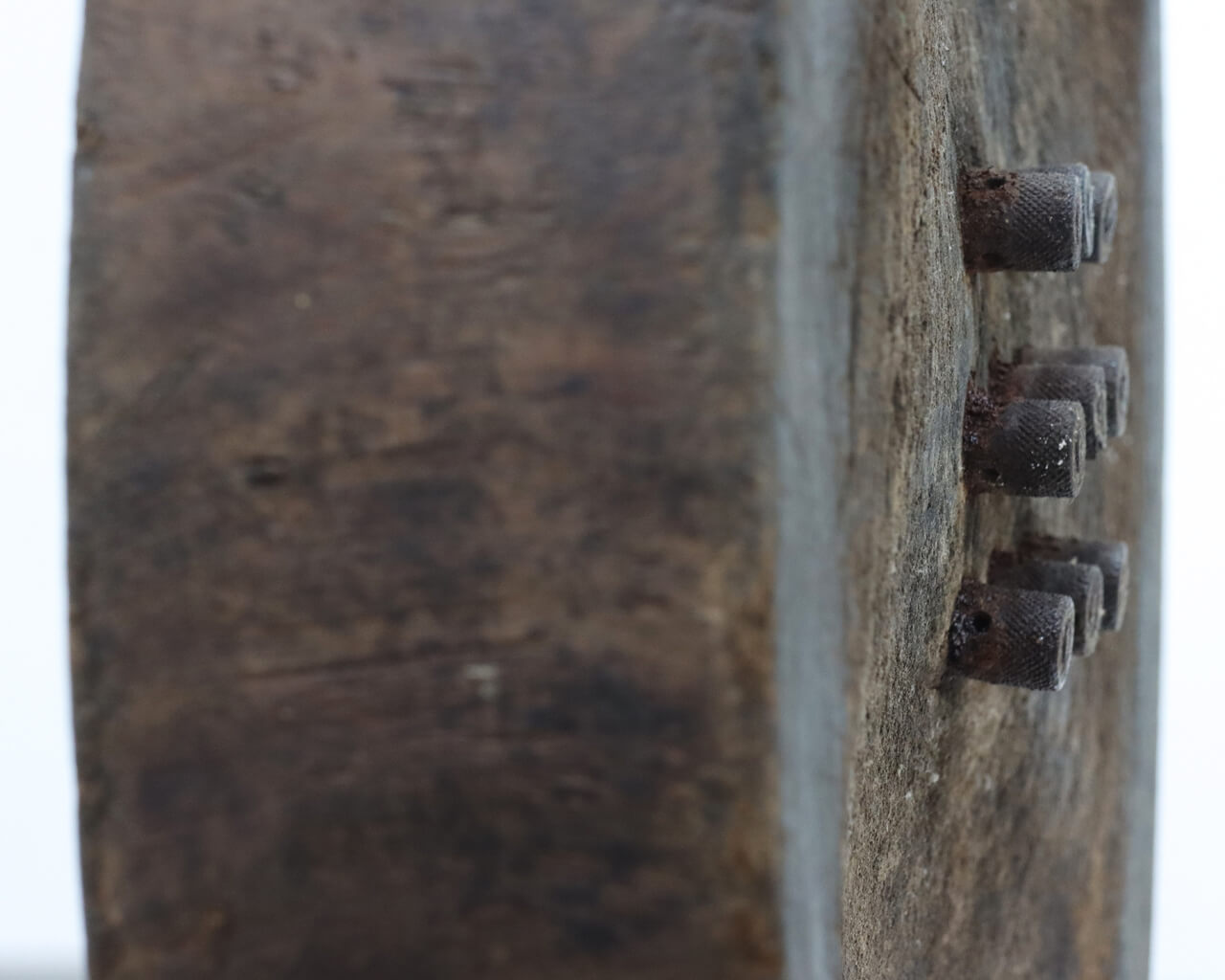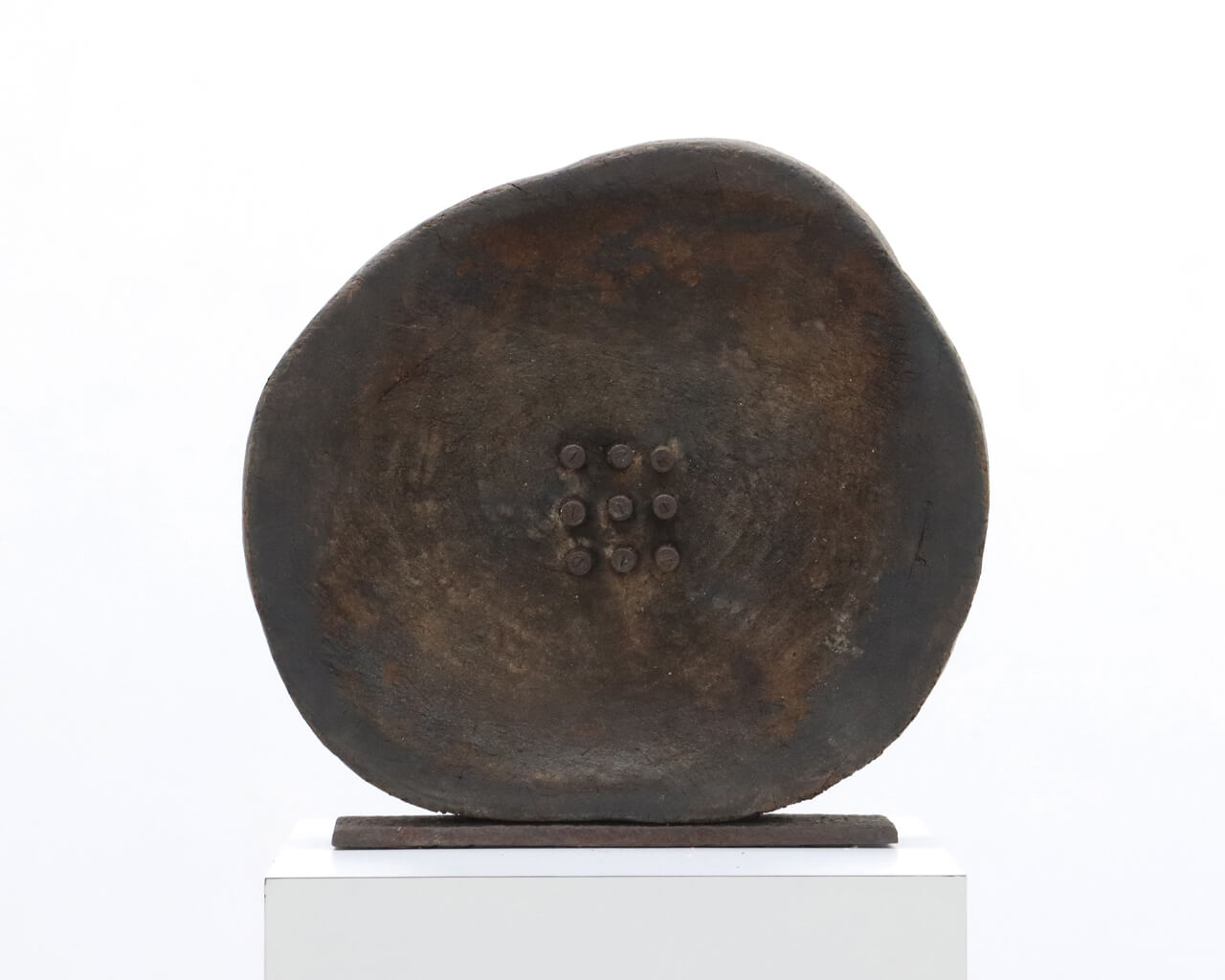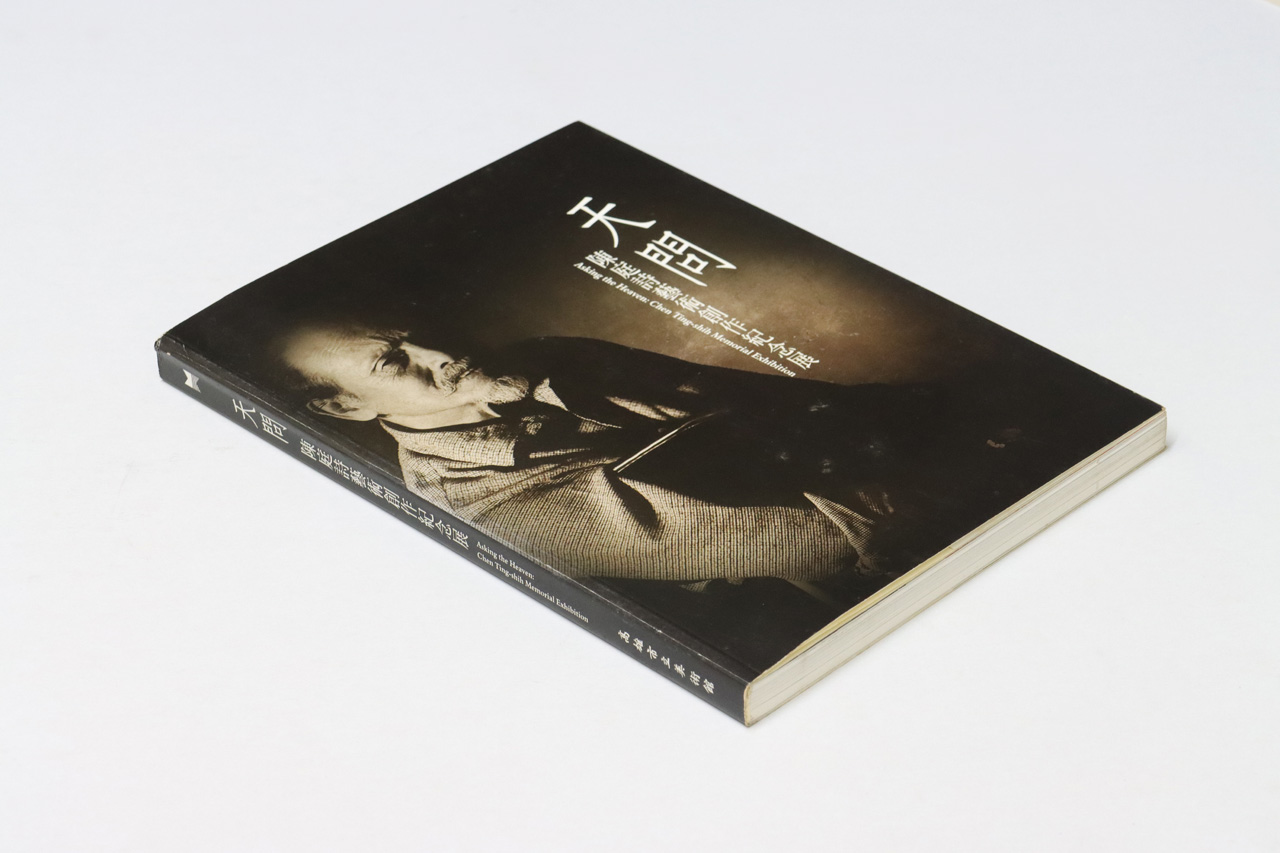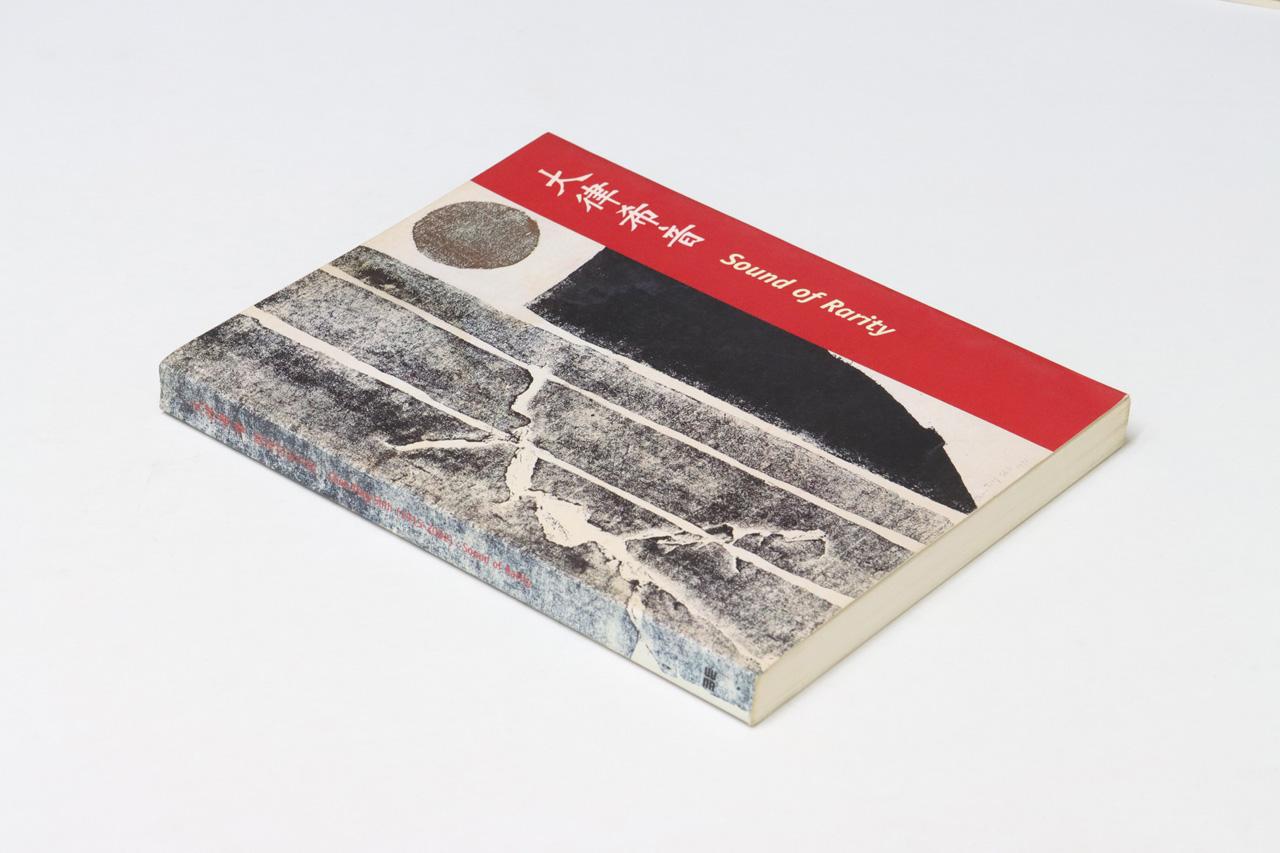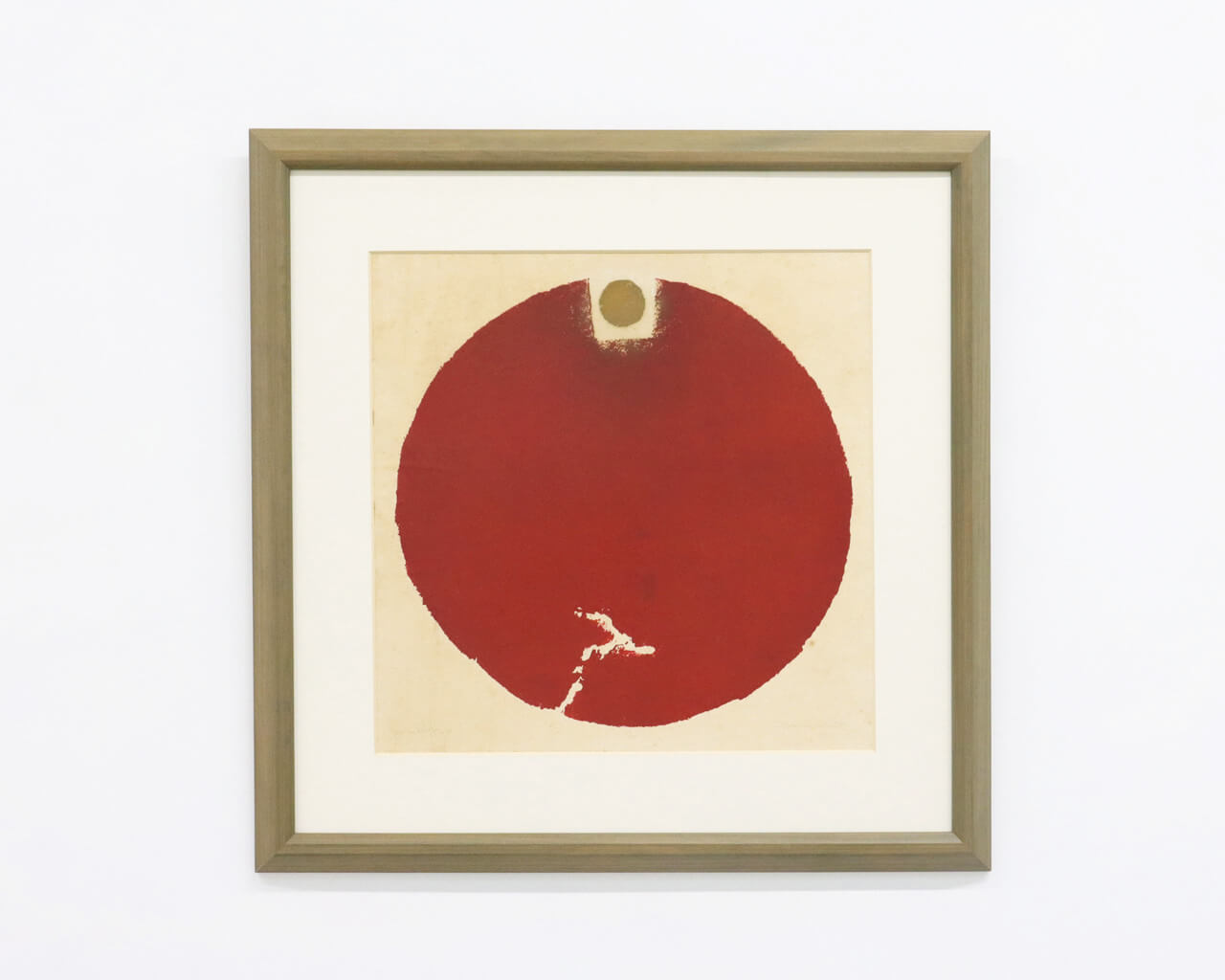01
About Chen Ting-Shih 關於陳庭詩
About Chen Ting-Shih 關於陳庭詩
⌈An artist has to explore and experiment in many ways and then to compare and choose from the available options. Art knows no boundaries. All creations are little more than choices made in the process.
|Chen Ting-Shih1⌋ |

|Artist Chen Ting-Shih(1915-2002) Image Source: Chen Ting-Shih Foundation
Chen Ting-Shih was inextricably tied to the trend of “abstraction” in Taiwanese modern art, for he sought to blend the oriental spirit into modern forms.2 Demonstrating lifelong dedication to artistic creation, Chen was one of the most iconic artists in the history of Taiwanese modern art.
Born to a family of functionaries in Fujian in 1916, Chen suffered hearing loss in an accident at a tender age. Nevertheless, by dint of his family’s strong background in Chinese studies and his exposure in his early youth to Western realism advocated and introduced by Xu Bei-Hong, Chen was able to build a solid foundation in traditional Chinese poetry, calligraphy, and painting, as well as in Western realistic drawing and oil painting.
After moving to Taiwan, Chen worked as a librarian at the Provincial Taipei Library from 1948 to 1957. Influenced by Western modern and abstract art trends, he finally resigned from his official position to devote himself to artistic creation. Chen co-founded the “Chinese Modern Printmaking Association” in 1958 and joined the “Fifth Moon Group” in 1965. In this period, he published many abstract prints on chipboards and actively promoted the reform of abstract art.
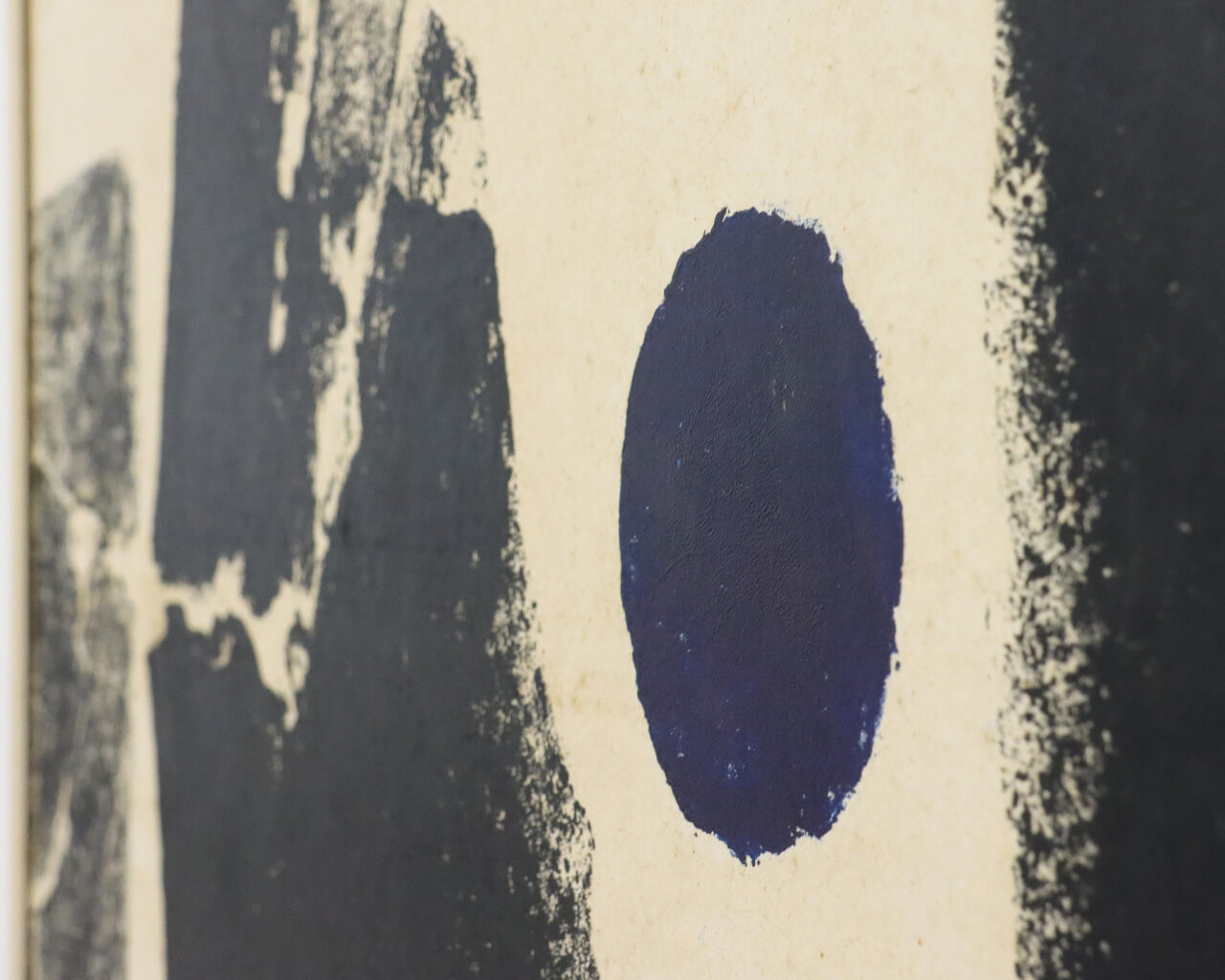
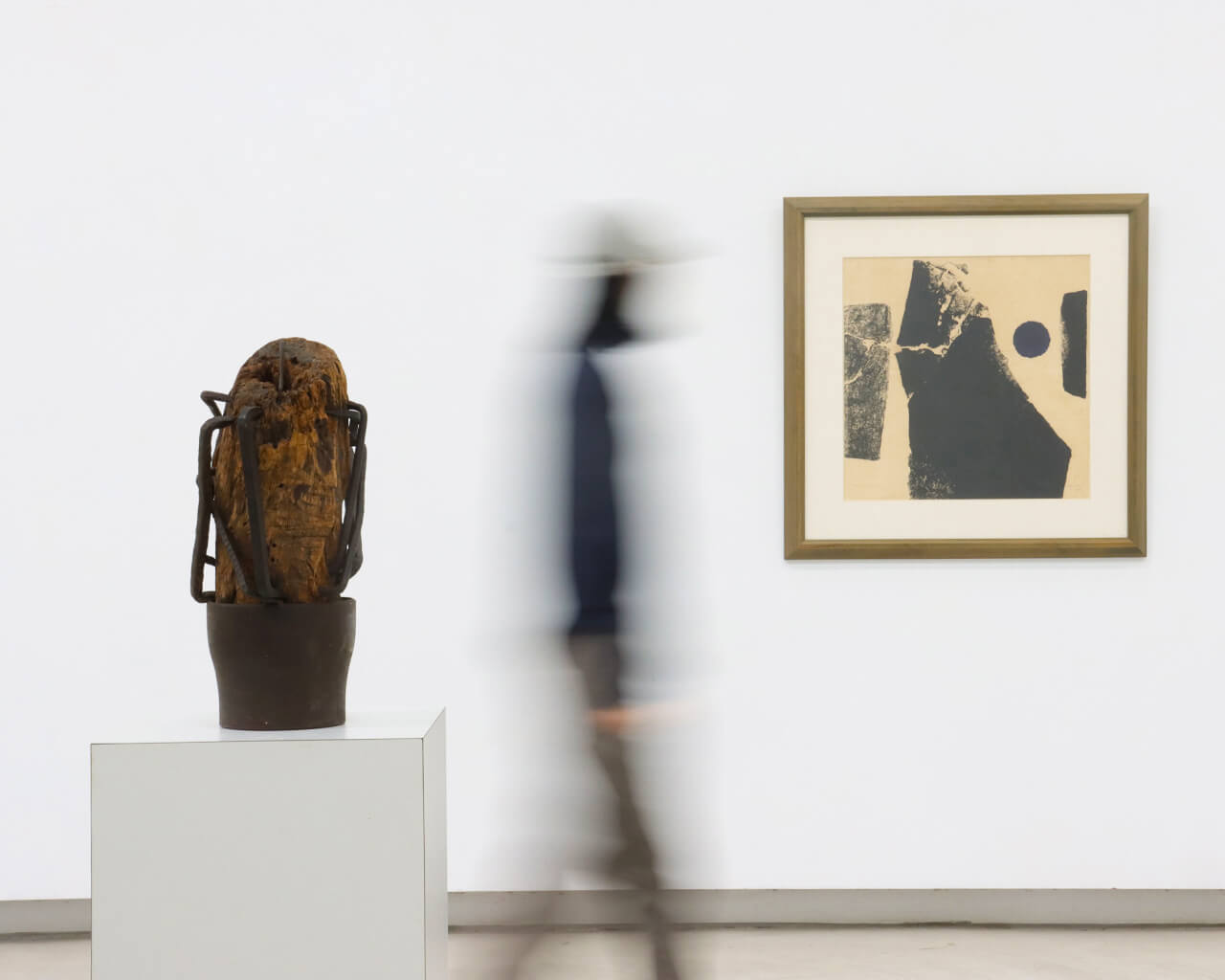
|Chen Ting-Shih, Dreaming in the Glacier #9, 1974, 63x63cm, Woodblock print on paper
Chen Ting-Shih, Dreaming in the Glacier #9, 1974, 63x63cm, Woodblock print on paper
|
Chen not only had his sui generis view on Chinese and Western modern abstract forms, but also devoted himself to 3D iron sculpture at the age of nearly seventy. He collected scrap metal parts from ship-breaking yards as his creative materials and welded them into abstract works, which made him a pioneer of welded sculpture in Taiwan. Art had been Chen’s lifelong companion. He participated in various exhibitions and won numerous awards at home and abroad. He died of illness at the age of eighty during the preparation for his solo exhibition at the Taipei Museum of Fine Arts in 2002. His presence in major exhibitions included “São Paulo Art Biennial” (1959/1961/1963/1965/1971), “Modern Prints Exhibition” (1959-1966), “Korean International Print Biennial” (1970/1972), “British International Print Biennial” (1972/1974), “Chen Ting-Shih Retrospective at Eighty” (1993, Provincial Taiwan Museum of Fine Arts), “Taipei Biennial” (1996), “Twentieth Century Metal Sculpture Exhibition” (1998-1999, Musée des Beaux-Arts de Calais / Centro Atlántico de Arte Moderno), “Sound of Rarity: Chen Ting-Shih Memorial Exhibition” (2002, Taipei Fine Arts Museum), and “Asking the Heaven: Chen Ting-Shih Memorial Exhibition” (2005, Kaohsiung Museum of Fine Arts). He was also the winner of the first prize of the “1st Korean International Print Biennial” (1970), the 8th Golden Goblet Award of the Art Society of China (1971), and the 6th Modern Painting Achievement Award of the Li Chun-Shan Foundation (1999). Chen’s 3D iron sculpture [Johnnie Walker], along with the works by international sculpture masters Eduardo Chillida and César Baldaccini, was included in the book Art of the 20th Century written by famous French art critic Jean Louis Ferrier, in which Chen appeared as the only Asian artist.
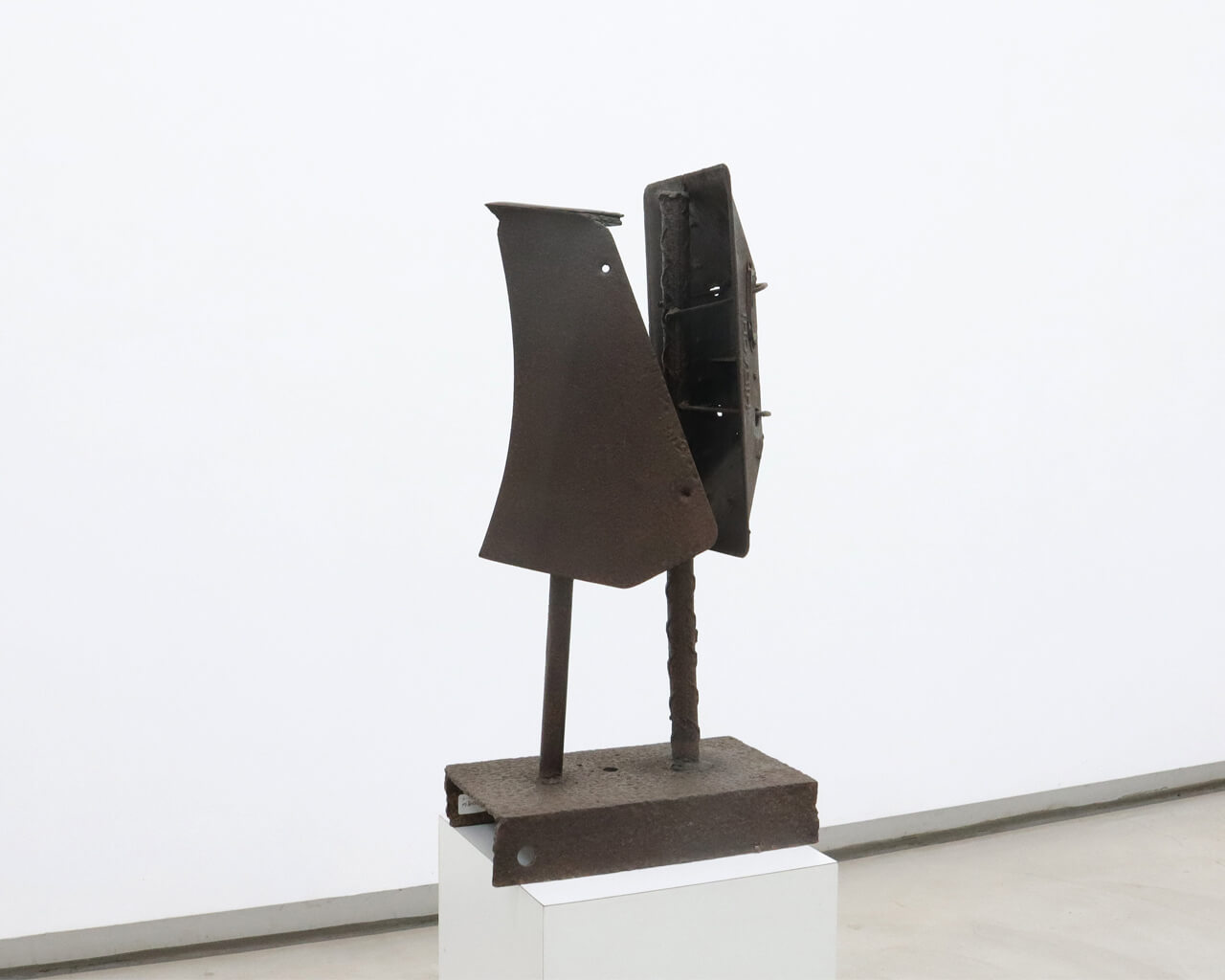
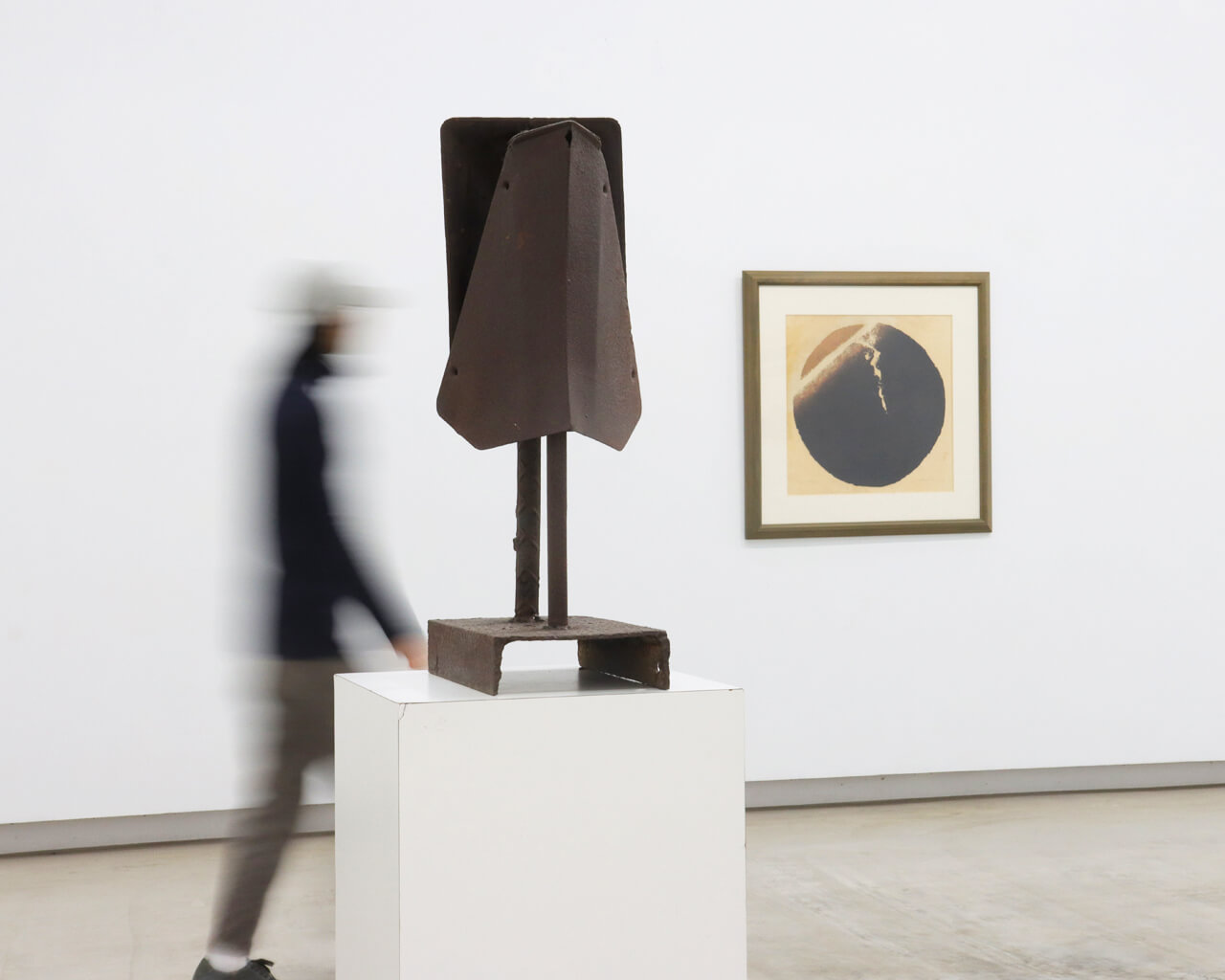
|Chen Ting-Shih, Face to Face, 1980s, 80x39x20cm, Iron
Chen Ting-Shih, Face to Face, 1980s, 80x39x20cm, Iron
|
Throughout his life, Chen had been involved in a wide range of artistic fields, including traditional Chinese painting, calligraphy, epigraphy, woodcut, abstract printmaking, oil painting, acrylic painting, and 3D iron sculpture. Of all these professional fields, his most prominent and praised achievements found expression in abstract printmaking and 3D iron sculpture.
⌈Printmaking and sculpture were the two poles of Chen Ting-Shih’s artistic career, whereby he always satisfied his desires for visual and tactile expression.
|Chu Ge, Artist3⌋ |
⌈Although Chen Ting-Shih had engaged in such a rich variety of artistic fields, his achievements in the following two fields are the most revered and praised by the art circles at home and abroad. One is his post-1965 abstract prints as simple in style as inimitable in imagery, and the other is the kaleidoscopic 3D iron sculptures he made in large bulk during his twilight years.
|Liu Kao-Hsing, Artist4⌋ |
Chen’s creative style evolved from abstract printmaking into 3D iron sculpture in terms of form. However, in terms of content, it maintained its essential qualities such as purity, stability, chaotic vastness, and majestic grandeur.5 Artist Lee Shi-Chi once commented: “As a modern artist par excellence, he still retained the timeless oriental sentiment. He blended tradition with modernity as well as realism with abstraction, hence the unique ‘Chen Ting-Shih style’.”6
